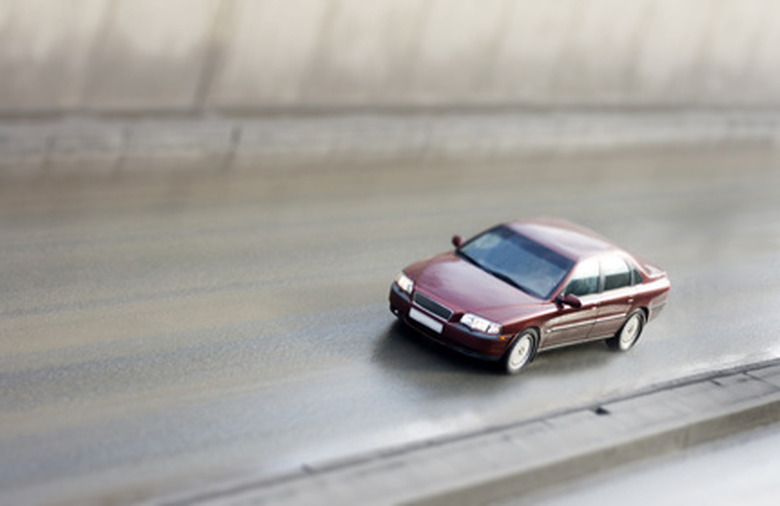Science Fair Project Ideas On Cars
Cars utilize myriad scientific principles to provide a useful service in the daily lives of millions of people. Take a closer look at the familiar automobile to devise a science project that is both unusual and relevant. For inspiration, brainstorm all of the scenarios involved in driving a car, all of the potential improvements that could be made to a car and all of the individual features that help a car to function smoothly.
Mousetrap Power
Mousetrap Power
For a simple science project that focuses on kinetic energy sources, build a working model car that is powered by a simple mousetrap. Use foam to build a lightweight body for the vehicle. For wheels, use old DVDs or compact disks. A spring-loaded mousetrap will create the necessary force to propel the car an impressive distance. For a more thorough project, create multiple mousetrap-powered cars, each with slightly different dimensions and styles. See how varying a particular feature affects the car's performance.
Going Solar
Going Solar
If your interests lie in alternative and renewable energy sources, you can build a solar-powered model car. To make the car even "greener," build it out of recycled materials. One approach is to use a solar-powered kit. Expect a kit to contain a 1.0 or 1.5 volt solar panel. It should come with alligator clip leads, a motor and an instruction booklet.
Driver Behavior
Driver Behavior
Use your science project to take a behavioral approach to cars, looking at the changes in driver behavior given different circumstances. For example, you could measure the way in which drivers' behavior changes during weekdays and weekends, basing your study on how many cars run red lights at a particular intersection. You could also record driver behavior at stop signs, noting how many cars come to a complete stop and how many simply slow to a "rolling" stop. For other variables, attend to the driving behavior of people in different types of cars, such as SUVs versus smaller vehicles, or coupes versus sedans.
A Third Headlight
A Third Headlight
For a safety-minded science project, test whether a third headlight, placed above the dashboard, can improve drivers' reaction times. To carry out the project, mount three lights on a board in an arrangement that emulates the front of a car. Time how long it takes for participants in the experiment to respond to the flashing of the lights. Test whether there is any difference between flashing two lights or flashing three. As an extension, create additional arrangements of lights. You could also test whether there is any difference between reaction times for red or white lights.
Cite This Article
MLA
Hill, Danielle. "Science Fair Project Ideas On Cars" sciencing.com, https://www.sciencing.com/science-fair-project-ideas-cars-7904989/. 24 April 2017.
APA
Hill, Danielle. (2017, April 24). Science Fair Project Ideas On Cars. sciencing.com. Retrieved from https://www.sciencing.com/science-fair-project-ideas-cars-7904989/
Chicago
Hill, Danielle. Science Fair Project Ideas On Cars last modified August 30, 2022. https://www.sciencing.com/science-fair-project-ideas-cars-7904989/
